

Housing style
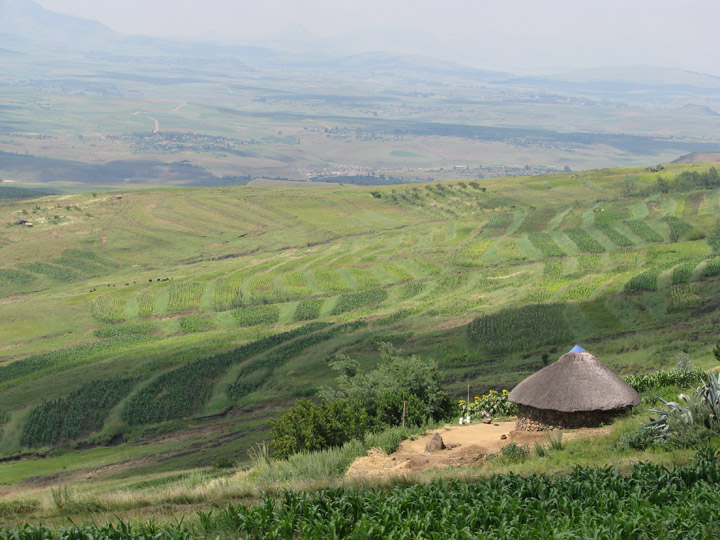
The traditional style of housing in Lesotho is called a rondavel.
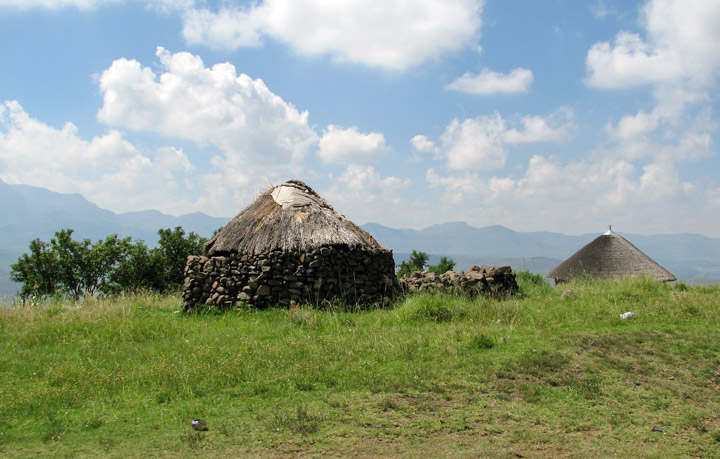
A rondavel is a traditional African-style house.
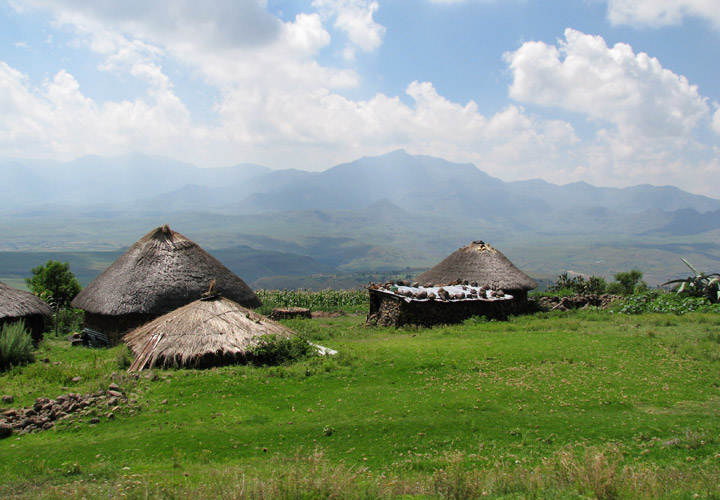
It is usually round in shape and is traditionally made with
materials that can be locally obtained in raw form. The rondavel's walls are
often constructed from stones. The mortar may consist of sand, soil, or some
combinations of these mixed with dung. The floor is finished with a processed
dung mixture to make it smooth. The roof braces of a rondavel are made out of
tree limbs, which have been harvested and cut to length. The roof itself is made
out of thatch that is sewn to the wooden braces with rope made out of grass. The
process of completing the thatch can take one weekend or up to a year with a
skilled artisan, as it must be sewn in one section at a time, starting from the
bottom working towards the top. As each section is sewn, it may be weathered and
aged in so as to form a complete weatherproof seal.
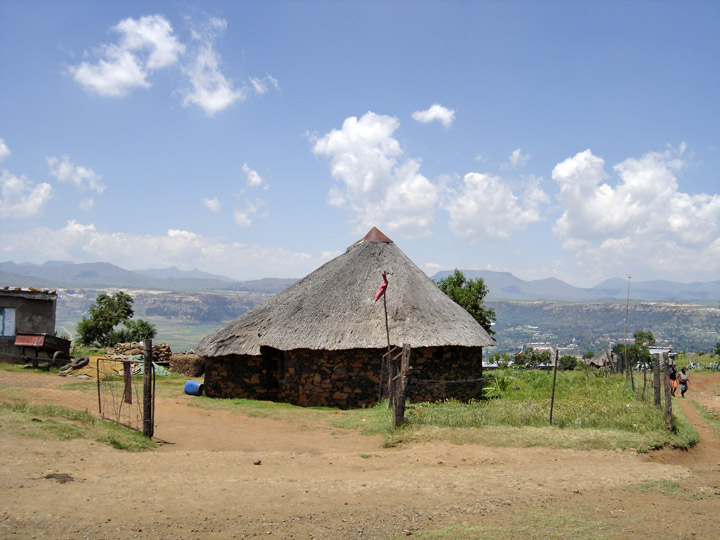
Rondavels can be found in the countries of Southern Africa, including: South
Africa, Lesotho (where the hut is also known as a mokhoro), Swaziland, Botswana,
and others. Small variations exist in different areas in the height of walls and
pitch of roofs as well as how the rondavels are finished. Some people
elaborately carve, paint, or decorate the outside wall that has been finished
off with dung. In other places, people leave their rondavels undecorated.
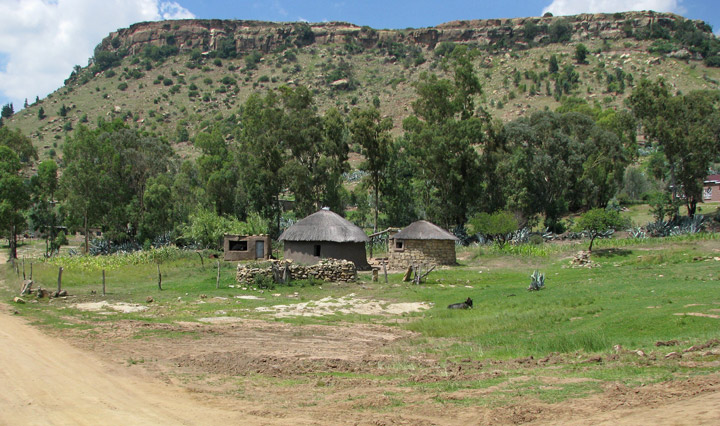
In recent times, with the availability of modern construction materials, the
appearance and construction of rondavels have changed. They may have concrete
foundations, be built with cement blocks or brick, mortared with cement, and/or
roofed with corrugated tin. While the traditional rondavel did not have running
water, electricity, and/or other modern amenities, many are now equipped with,
or have been adapted to accommodate these.
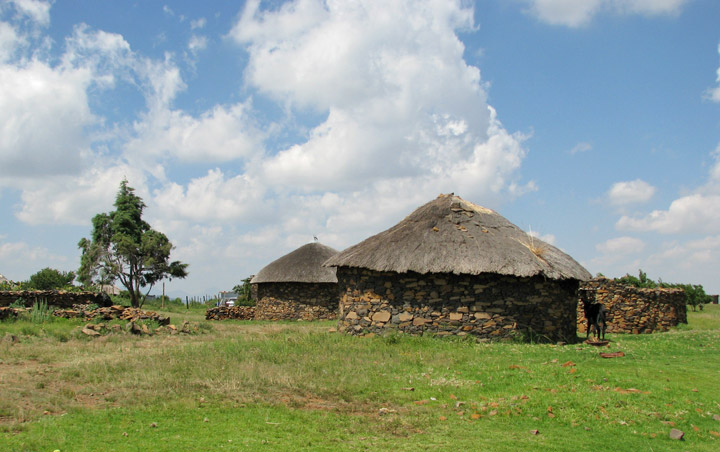
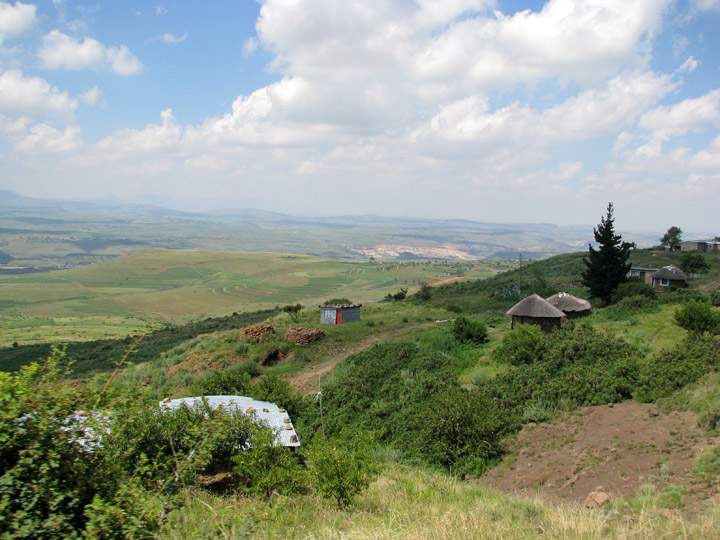
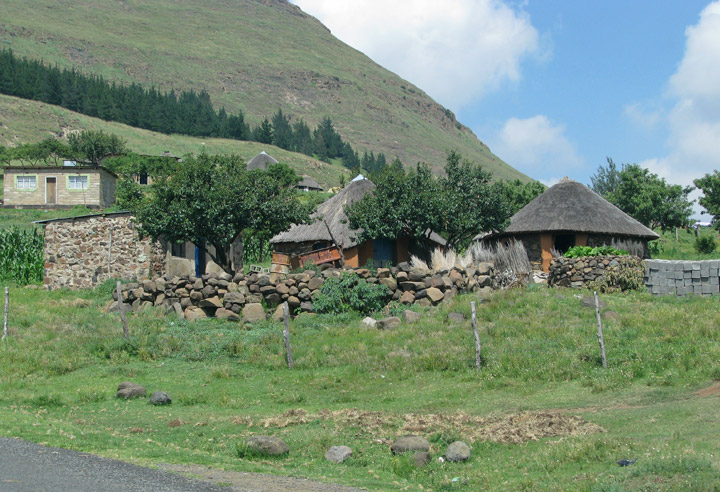
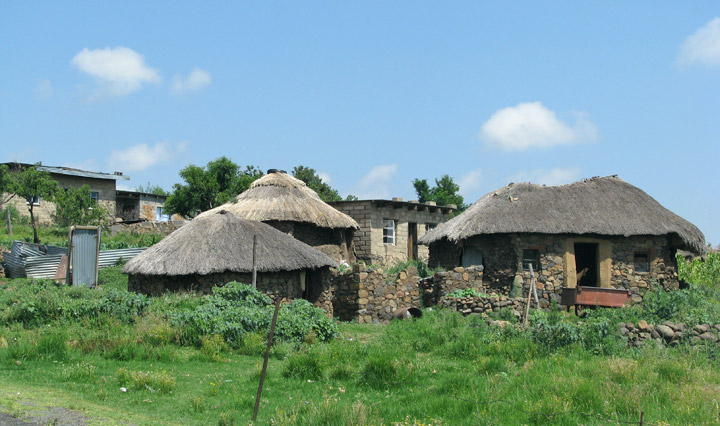
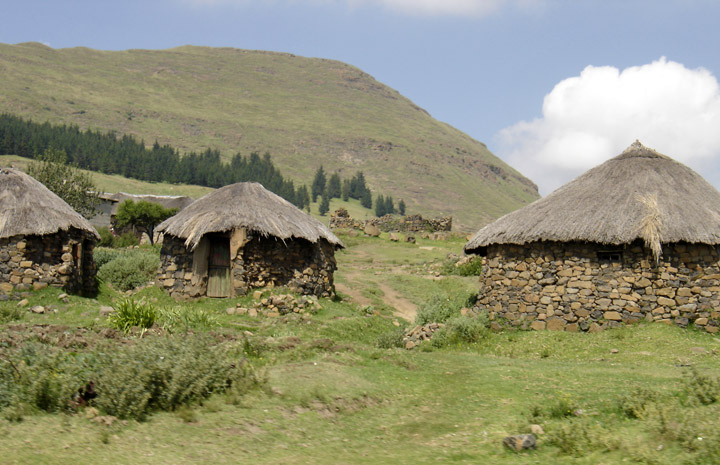
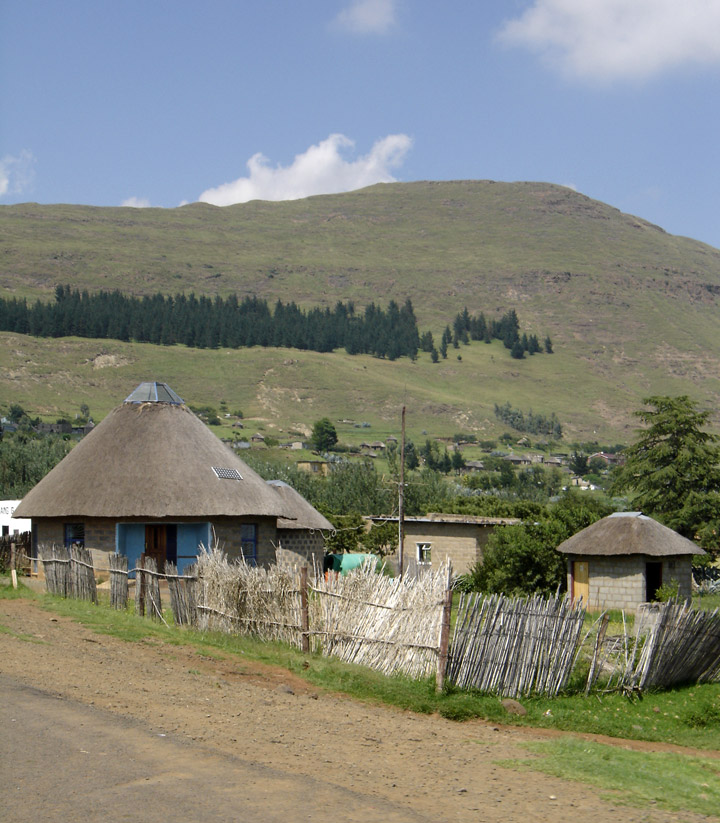
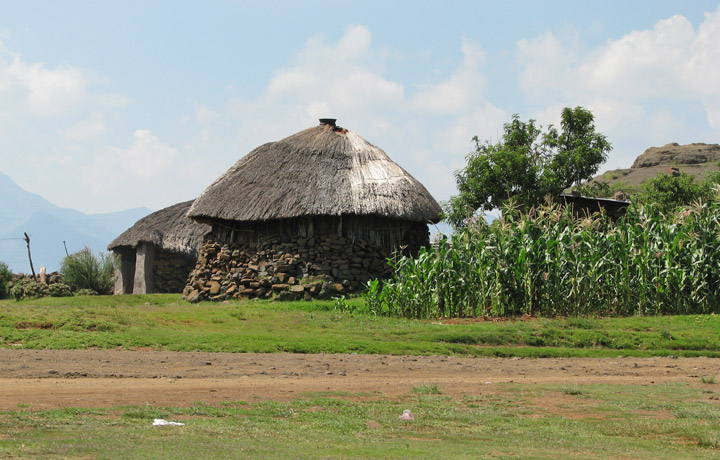
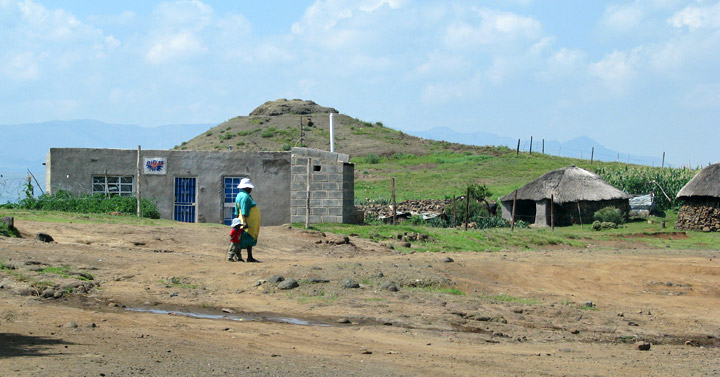

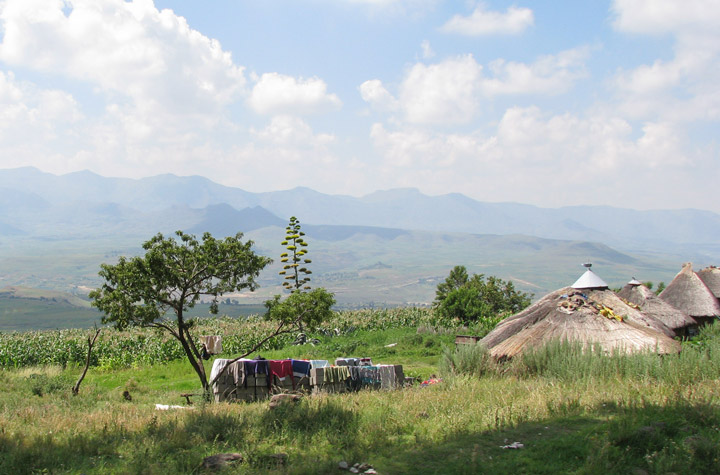
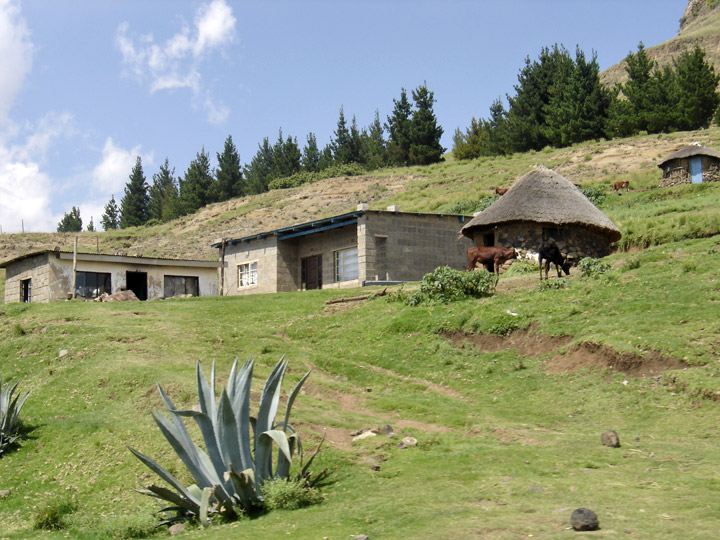
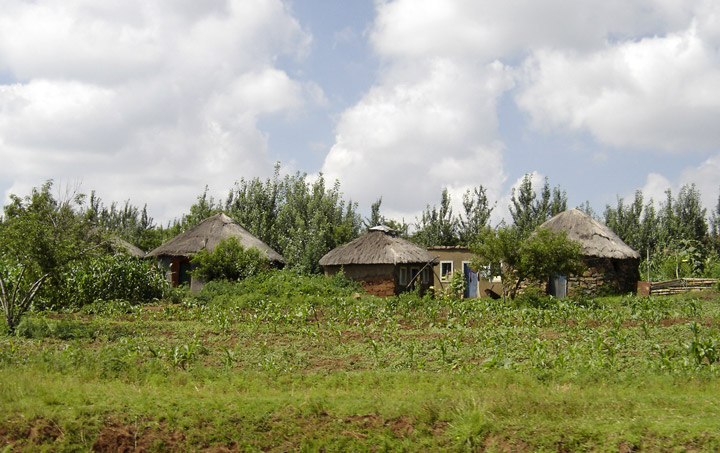
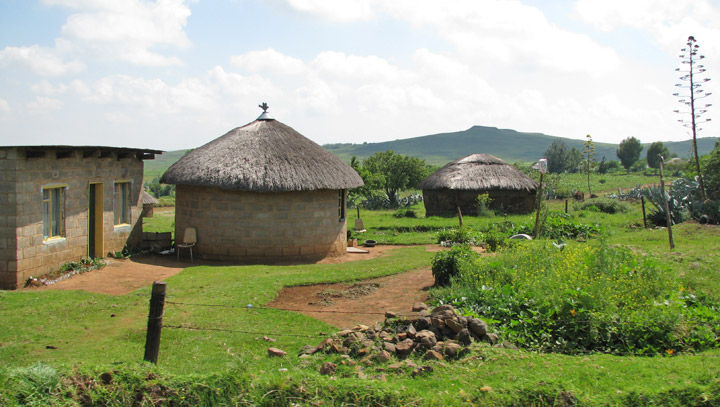
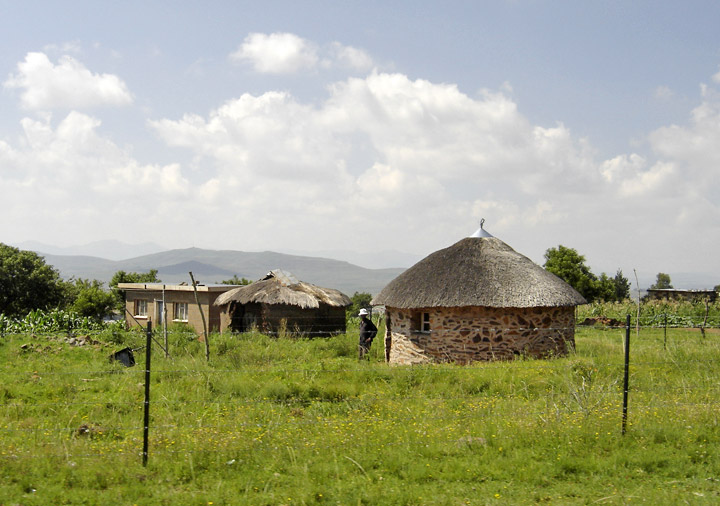
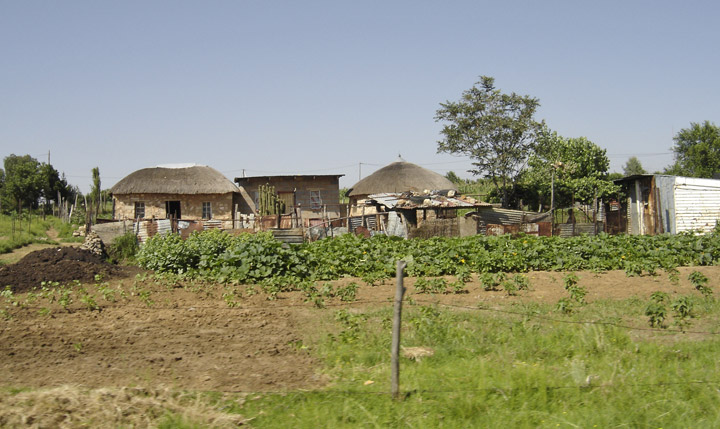
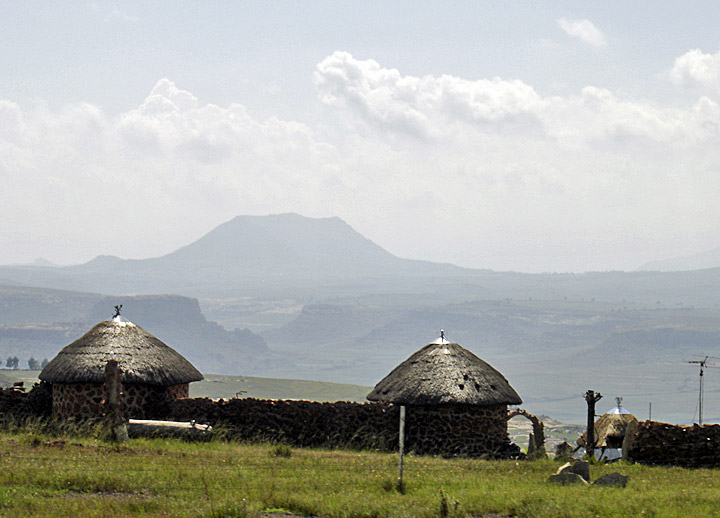

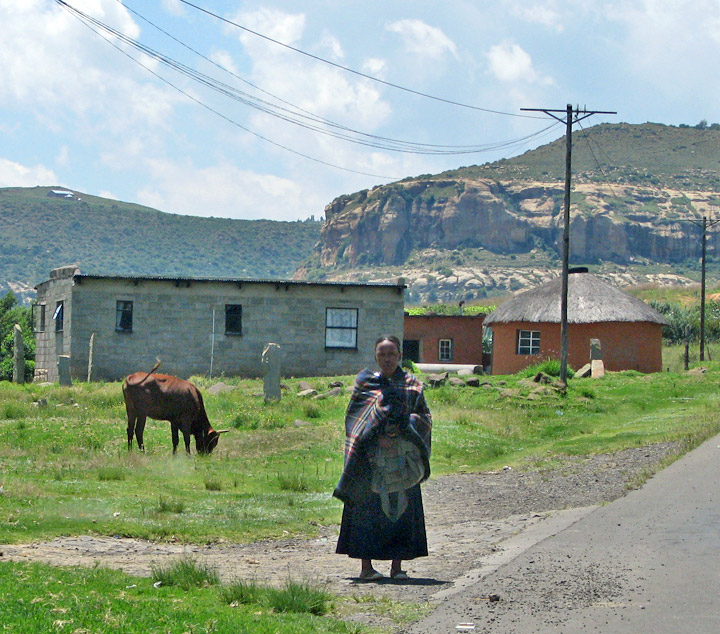
traditional Lesotho dressss
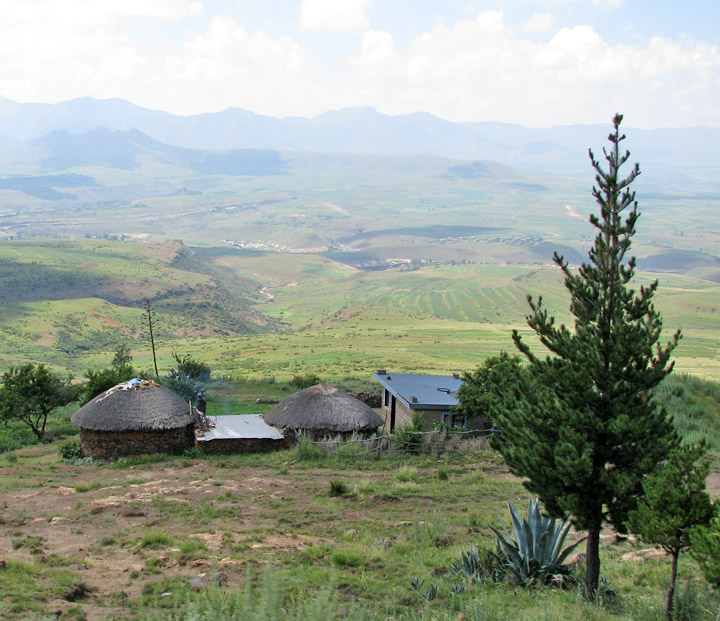
view of the Lesotho highlands

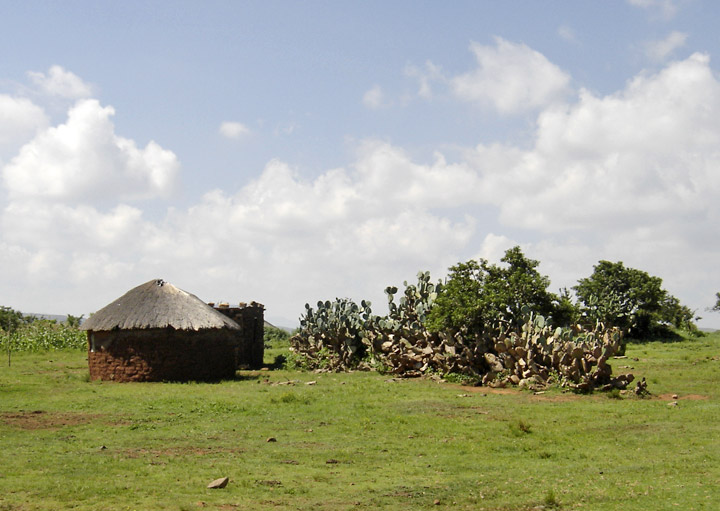
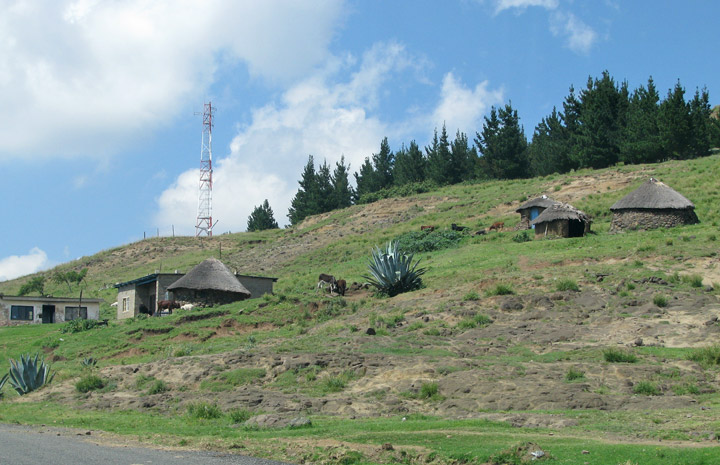
traditional housing next to the modern cell phone tower

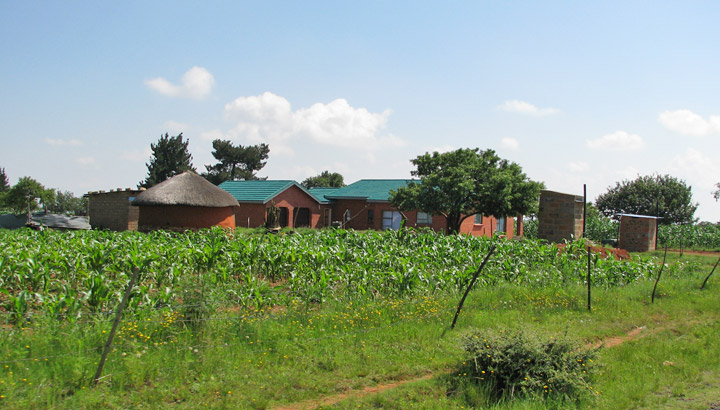
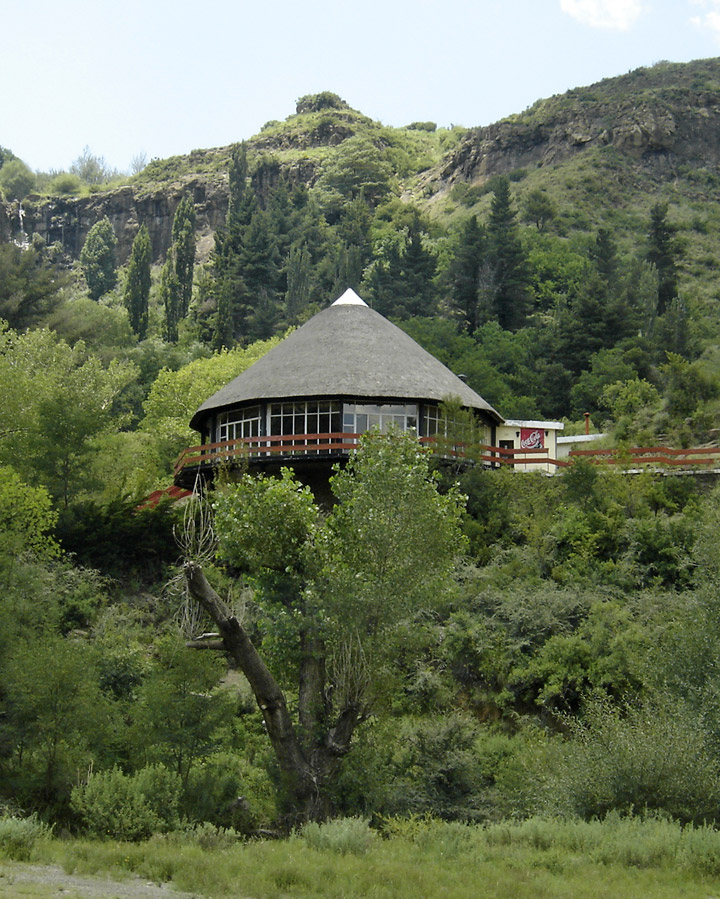
traditional style for a modern restaurant
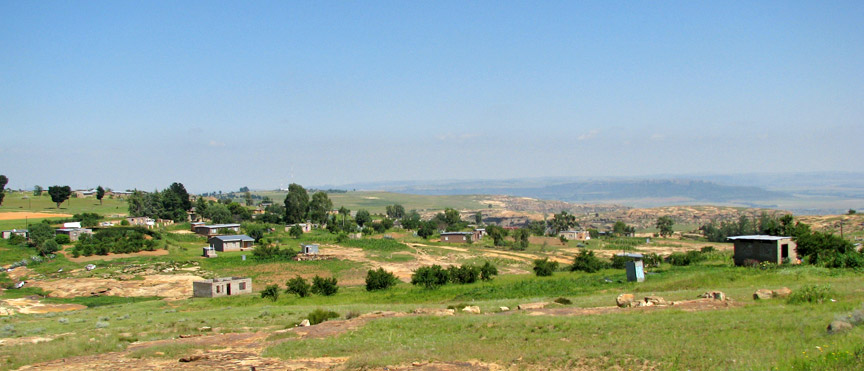
many more modern dwellings are of the box style